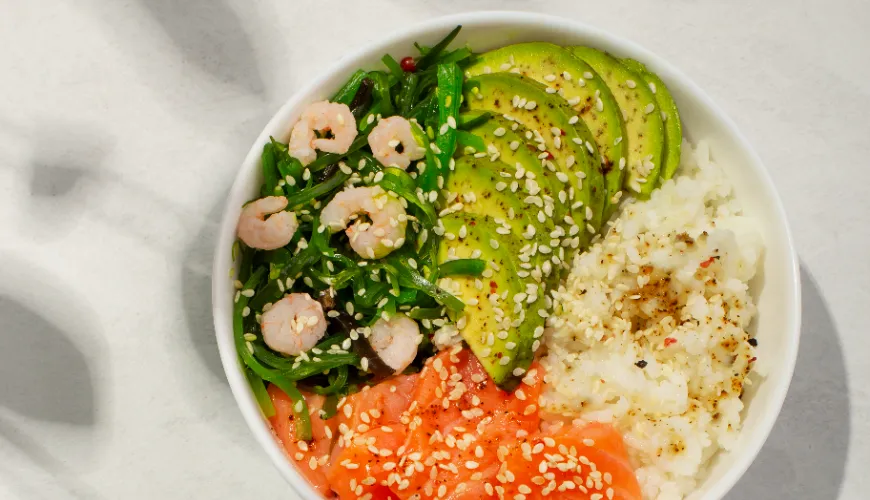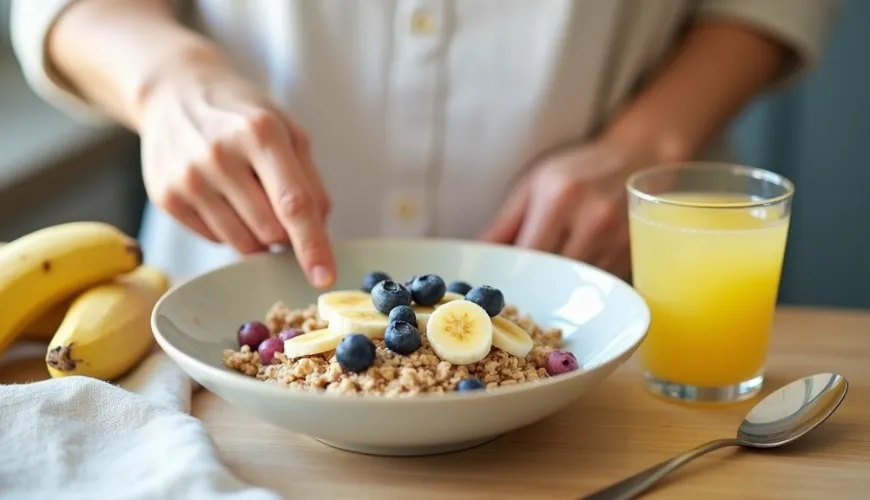
How to Prepare a Nutritious Buddha Bowl at Home

What is a Buddha Bowl and Why You Should Try It
A Buddha bowl, also known as a "bowl of tranquility and abundance," is a dish that combines various ingredients rich in essential nutrients, flavors, and textures. The inspiration for this meal comes from the Buddhist concept of abundance and balance – you fill the bowl with diverse ingredients that not only satisfy but also harmonize the body and mind. This mixture of ingredients combines freshness, nutrition, and aesthetics, making it an ideal choice for anyone who cares about a healthy and balanced lifestyle.
What a Buddha Bowl Consists Of
The Buddha bowl is a highly flexible dish, meaning you can customize it according to your preferences and needs. The base is often a grain or pseudo-grain, providing the necessary energy and long-lasting satiety. Among the most popular grains is quinoa, which is rich in protein and essential amino acids, but also brown rice, bulgur, or whole-grain couscous. These basic components not only satisfy but also provide fiber, which is crucial for digestive health.
On this base, a colorful array of fresh and cooked vegetables is added. Raw vegetables like spinach, arugula, lettuce, or kale add freshness and vitamins that boost immunity. Root vegetables, such as carrots and beets, can be roasted or boiled, adding a gentle sweetness and richness in minerals like potassium and iron. Other popular ingredients include broccoli, zucchini, and bell peppers – these vegetables not only add color to the bowl but are also sources of antioxidants and fiber. The choice of vegetables can be changed according to the season and personal preferences, ensuring a diversity of flavors and nutrients.
Proteins are another important component that a Buddha bowl typically contains. Plant-based proteins, such as chickpeas, beans, or tofu, add creaminess to the dish and essential nutrients that support muscle recovery and proper body function. Chickpeas and beans, with their soft creamy texture, complement the overall structure of the bowl, while tofu or tempeh, marinated and fried on a pan, add a more pronounced flavor and give the bowl a warm layer. For those who prefer animal proteins, pieces of chicken, salmon, or boiled eggs can be added to the bowl, expanding the nutritional options.
Healthy fats play an important role in the Buddha bowl as well. Avocado is a popular source of healthy fats that contribute to heart health and support the absorption of fat-soluble vitamins, such as vitamins A, D, E, and K. Seeds like chia, sunflower, or pumpkin seeds enrich the bowl with omega-3 fatty acids, which are important for brain health and reducing inflammation in the body. Nuts, such as almonds or cashews, add a pleasant crunch to the bowl and also contain proteins and magnesium, which support the nervous system and reduce stress.
How to Prepare Your Own Buddha Bowl
Preparing your own Buddha bowl is very intuitive and fun. Start by choosing your base, which can be cooked quinoa, brown rice, or another grain of your choice. You can prepare this base in advance and store it in the fridge to speed up preparation when you're hungry.
Then add layers of vegetables – if you prefer raw vegetables like spinach or arugula, place them directly in the bowl. For those who prefer cooked vegetables, you can briefly steam or roast carrots or broccoli to improve their digestibility. Add protein components according to your needs – chickpeas, beans, or tofu can be marinated in a sauce of your choice and then fried to enhance their flavor.
Finally, add sliced avocado, seeds, or nuts and drizzle the bowl with dressing. A popular choice is peanut or tahini sauce, which you prepare by mixing peanut butter or tahini with a little water, lemon juice, and soy sauce. This dressing connects the flavors and adds smoothness to the dish.
Health Benefits of Buddha Bowl
A Buddha bowl is literally a package full of health – thanks to its balanced combination of carbohydrates, proteins, and fats, it ensures long-lasting energy and stable blood sugar levels, making it ideal for those who want to increase their productivity and avoid energy swings throughout the day. Grains provide fiber that supports digestion and lowers cholesterol levels, while proteins from legumes and tofu are key for tissue growth and repair. Vegetables, full of vitamins, minerals, and antioxidants, support the immune system and help protect cells from damage by free radicals.
Thanks to healthy fats, such as avocado or seeds, the absorption of certain nutrients is improved, and brain and heart health is supported. Omega-3 fatty acids from seeds also reduce inflammation in the body, which is beneficial for overall health and vitality.
Buddha Bowl as a Path to Health and Vitality
A Buddha bowl is not only a tasty and healthy dish but also a great way to learn how to prepare diverse and balanced meals. Thanks to endless possibilities of ingredient combinations, it easily adapts to your tastes and nutritional needs. By adding various superfoods, such as leafy greens, sprouts, or seaweed, you can enrich your bowl with additional nutrients and antioxidants that support cell health and body regeneration.
In conclusion, a Buddha bowl is an ideal dish for anyone looking for a tasty and balanced alternative that supports a healthy lifestyle. Its preparation is simple and quick, making it a great choice for busy days. Each bowl is an opportunity to experiment and discover new flavors, bringing energy, vitality, and joy into your life.

